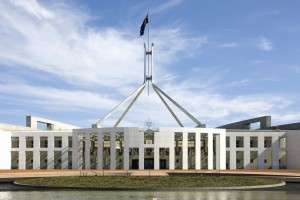Overall, there is very little in the Budget for the average business in the 2011 year. Apart from...
Summary of 2009/2010 Federal Budget
2009/2010 FEDERAL BUDGET - SUMMARY OF MAJOR CHANGES
1. Investment Allowance For Small Business Entities
The temporary bonus investment allowance has increased from 30% to 50% of the cost of the eligible depreciating asset.
| Small Business Eligible Asset Installed by: |
Rate of Investment Allowance: |
| 30 June 2009 |
50% in 2008/2009 |
| 30 June 2010 |
50% in 2009/2010 |
| 31 December 2010 |
50% in 2010/2011 |
Larger businesses are still eligible for the previously announced 30% tax deduction for assets acquired before 30 June 2009 and installed before 30 June 2010 and 10% for assets acquired between 1 July 2009 and 31 December 2009 and installed before 31 December 2010.
| Larger Business Eligible Asset Installed by: |
Rate of Investment Allowance after 12 December 2008 and Before: |
|
|
|
30 June 2009 |
31 December 2009 |
| 30 June 2009 |
30% in 2008/2009 |
|
| 30 June 2010 |
30% in 2009/2010 |
10% in 2009/2010 |
| 31 December 2010 |
10% in 2010/2011 |
10% in 2010/2011 |
2. Personal Tax Rates
For the income year commencing 1 July 2009 the Resident Personal Tax Rates (excluding Medicare Levy) will be:
| Taxable Income $ |
Rate % |
| $0 - $6,000 |
0% |
| $6,001 - $35,000 |
15% |
| $35,001 - $80,000 |
30% |
| $80,001 - $180,000 |
38% |
| $180,000 + |
45% |
3. Superannuation Caps
From 1 July 2009, the concessional contributions cap will be halved from the current standard cap of $50,000 to $25,000.
A reduction will also apply to the transitional caps to taxpayers aged 50 and over. The transitional concessional cap will be reduced from the current annual threshold of $100,000 to $50,000 per year. The new transitional concessional cap will apply until 30 June 2012.
Non-concessional contribution caps remain at $150,000 (indexed) per year which will be six times the standard concessional contribution cap.
4. Superannuation Co-Contributions
The superannuation co-contribution scheme will be reduced to 100% of eligible contributions from 1 July 2009 until 30 June 2012. The rate will increase to 125% of contributions from 1 July 2012 until 30 June 2014 and returned to its former level of 150% from 1 July 2014.
5. Age Pension
Eligibility for the age pension will gradually increase to 67 years of age. Pension changes will apply to new pension entrants from 1 July 2017, which means that it applies to people who are 57 or younger in July 2009.
| Date |
New pension age |
Affects taxpayers born |
When group reaches new age pension age |
| 1 July 2017 |
65 years & 6 months |
1 July 1952 to 31 December 1953 |
1 January 2018 to 30 June 2019 |
| 1 July 2019 |
66 years |
1 January 1954 to 30 June 1955 |
1 January 2020 to 30 June 2021 |
| 1 July 2021 |
66 years & 6 months |
1 July 1955 to 31 December 1956 |
1 January 2022 to 30 June 2023 |
| 1 July 2023 |
67 years |
From 1 January 1957 |
From 1 January 2024 |
6. Changes To Superannuation Guarantee Ruling
The Australian Taxation Office has released Superannuation Guarantee Ruling SGR 2009/2 which was originally published in draft form as SGR2008/D2. This ruling will apply from 1 July 2009 and employers will need to be aware of the position in calculating superannuation contributions and consider whether changes to their systems are necessary.
SGR 2009/2 generally recognises that ordinary hours of work, used to determine Ordinary Times Earnings (OTE), will be specified in an industrial award or employment agreement.
This Ruling provides clarification when an industrial award or employment agreement distinguishes between overtime and ordinary hours. Overtime does not form part of OTE, even if employees work overtime on a regular basis.
The Ruling also adopts a simpler approach to determining what is included in Ordinary Time Earnings and what is excluded. Essentially, under this approach, all earnings are included in OTE, except overtime or payments that relate specifically to overtime or other payments expressly excluded from OTE. Components of an employee’s Ordinary Time Earnings are shown in the table on the following page.
Components of Ordinary Time Earnings
| Payment to an employee in relation to: |
Included as part of OTE? |
|
| DRAFT GR 2008/D2 |
NEW SGR 2009/2 |
|
| Occasional overtime |
No |
No |
| Regular overtime |
Yes |
No |
| Occasional hours outside an Award or Agreement |
No |
No |
| Regular hours outside an Award or Agreement |
Yes |
No |
| Expense reimbursement |
No |
No |
| Annual Leave or Long Service Leave |
Yes |
Yes |
| Annual Leave Loading |
No |
No |
| Sick Leave |
Yes |
Yes |
| Allowance or Bonus |
Yes |
Yes |
| Christmas Bonus not solely related to overtime |
No |
Yes |
| Redundancy payments |
No |
No |
| Workers’ compensation payments where no work is performed |
No |
No |
| Workers’ compensation where work is performed |
Yes |
Yes |
| Sign-on bonus |
No |
Usually, Yes |
| Retention bonus |
Yes |
Yes |

